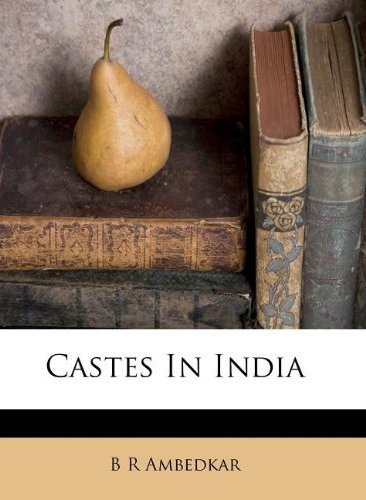What do you think?
Rate this book


36 pages, Kindle Edition
First published May 9, 1916
…responsible for durability of Hindu society, seed of swaraj (freedom), unique power of organisation, means of providing primary education and raising a defence force, means of self-restraint, natural order of society, and most important of all, eternal principle of hereditary occupation for maintaining societal orderHe wrote much on latrine cleaners and how good they should be at their jobs, and that a Brahmin priest, top of the tree have equal merit in the sight of God. Well, they might have but here on earth, the job of a Brahmin priest is infinitely more desirable than those who clean up excreta for a living.
Women, who should be the queens of households, wander in the streets or they slave away in factories. For the sake of a pittance, half a million women in England alone are labouring under trying circumstances in factories or similar institutions. This awful fact is one of the causes of the daily growing suffragette movement.Gandhi wrote, in a very insulting way,
The condition of England at present is pitiable. I pray to God that India may never be in that plight. That which you consider to be the Mother of Parliaments is like a sterile woman and a prostitute. Both these are harsh terms, but exactly fit the case. That Parliament has not yet, of its own accord, done a single good thing. Hence I have compared it to a sterile woman.But people like to pretend their idols don't have feet of clay, look at another icon of holiness, Martin Luther, who was behind the Peasants' War (he, like Gandhi, felt people were born into their position and aristocracy were aristocracy and the peasants should till the fields and... clean the toilets) and wrote, The Jews and Their Lies which inspired Hitler.
hope you will have the time and desire to know how a good portion of humanity who have been living under the influence of that doctrine of universal friendship view your action. We have no doubt about your bravery or devotion to your fatherland, nor do we believe that you are the monster described by your opponents. But your own writings and pronouncements and those of your friends and admirers leave no room for doubt that many of your acts are monstrous and unbecoming of human dignity, especially in the estimation of men like me who believe in universal friendliness. Such are your humiliation of Czechoslovakia, the rape of Poland and the swallowing of Denmark. I am aware that your view of life regards such spoliations as virtuous acts. But we have been taught from childhood to regard them as acts degrading humanity. Hence we cannot possibly wish success to your arms. But ours is a unique position. We resist British Imperialism no less than Nazism. If there is a difference, it is in degree.Not a word about the persecution of Jews, Gypsies, Jehovah's Witnesses, the mentally challenged or gays. Gandhi was not anti-Semitic in any way, rather the opposite, India has never been an anti-Semitic country anyway, but seemed to have a blind spot when it came to Hitler. After the war, he said about him, "The crime of an obviously mad but intrepid youth is being visited upon his whole race with unbelievable ferocity." Youth! makes me want to spit.